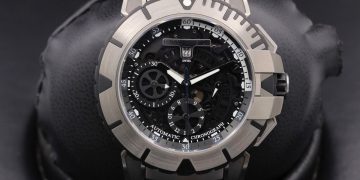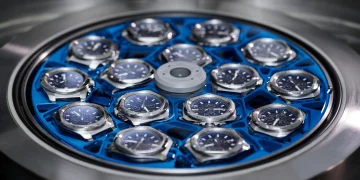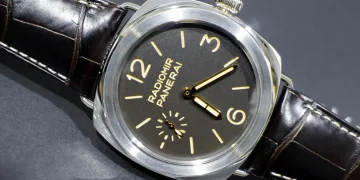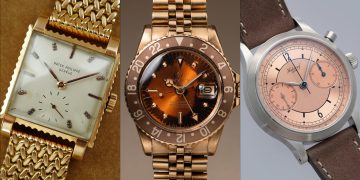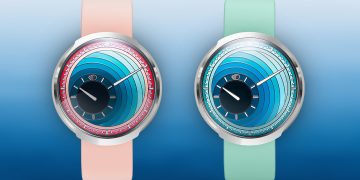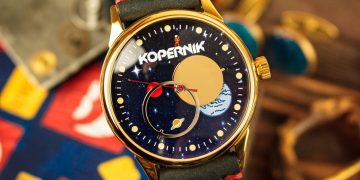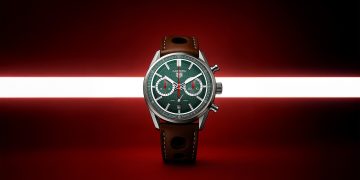Introduction:
The world of horology has evolved rapidly over the past few decades. Watchmakers, once bound by tradition, are now embracing technology, innovation, and creativity to meet the demands of modern consumers. As new watch models are launched, many feature groundbreaking innovations that push the boundaries of both design and functionality. These innovations aren’t just about adding flashy features but are also about rethinking how watches can serve people in new and meaningful ways.
In this article, we will explore the innovative features of a new watch model and discuss their impact on the watch industry, user experience, and how they reflect the ongoing evolution of timepieces. We’ll evaluate the practicality, technological advancements, and user feedback surrounding these features, and ask: Are these innovations truly valuable, or are they just trendy additions to attract attention?
1. The Role of Innovation in Modern Watchmaking
In the past, a watch’s primary function was to keep time—nothing more. However, as consumers’ needs and expectations have changed, watchmakers have had to adapt. Today’s watches are equipped with advanced materials, smart features, and enhanced accuracy. For instance, Swiss brands like Omega and Rolex have integrated new mechanical technologies to improve timekeeping precision, while Apple and Samsung have introduced wearable smartwatches that can track fitness, health, and even ECG.
Innovation in watches is no longer just about improving accuracy. It’s about adding multi-functional capabilities that can enhance the wearer’s lifestyle. So, what makes a watch truly innovative in today’s competitive market? Let’s take a closer look at some of the key features that are being introduced in new models.
2. Smart Features in Traditional Watches: The Hybrid Revolution
One of the most significant innovations in recent years has been the development of hybrid watches that combine traditional mechanical design with smart technology. These watches provide the best of both worlds: they maintain the elegance of a classic timepiece while offering smart functionalities like fitness tracking, notifications, and heart rate monitoring.
2.1 Fitness and Health Monitoring
Many new watches now include advanced fitness tracking features. From heart rate monitoring to sleep tracking, these watches help users stay on top of their health in real-time. Garmin, for example, has become a leader in this space, offering watches that are not only great for athletes but also for anyone looking to improve their overall well-being.
Some models even include ECG (electrocardiogram) functionality, which is a medical-grade feature that can detect irregular heart rhythms, providing users with valuable health data. For those who are more health-conscious, this kind of innovation can be a game-changer, adding real value to their watch without compromising on its aesthetic appeal.
2.2 Smart Notifications and Connectivity
Another feature that has gained popularity is the integration of smart notifications. While still maintaining the look and feel of a traditional watch, many new models allow users to receive notifications directly on their wrist. This can include messages, emails, and even app alerts. Apple Watch, for instance, offers seamless integration with iPhones, making it a powerful companion for staying connected without having to pull out your phone constantly.
This feature is especially beneficial for individuals who lead busy lifestyles and need to stay connected, but may not always have time to check their phone. The convenience and time-saving aspect of this feature make it a highly attractive innovation.
3. Advanced Materials and Durability
Innovation in materials has also played a significant role in the modern evolution of watches. Brands are now using state-of-the-art materials to enhance the durability, performance, and weight of their timepieces. Materials like titanium, ceramic, and carbon fiber are becoming more common in watchmaking, offering a variety of benefits over traditional stainless steel.
3.1 Ceramic and Carbon Fiber
For example, ceramic is increasingly being used in high-end watches because of its scratch-resistant properties and lightweight nature. It provides a smooth, glossy finish that is both visually appealing and functional. On the other hand, carbon fiber is popular for its strength-to-weight ratio. Used in sports or tactical watches, carbon fiber offers excellent shock resistance and is highly durable, making it ideal for outdoor activities.
These materials help create watches that are not only more durable but also more comfortable to wear. The integration of high-tech materials into timepieces demonstrates a major leap forward in terms of both functionality and longevity.
3.2 Solar-Powered Watches
Another innovative feature is the use of solar-powered technology. Brands like Citizen have pioneered solar-powered watches, where the watch is charged by light, whether it be natural sunlight or artificial light. This feature eliminates the need for battery changes, making the watch both more environmentally friendly and convenient for the wearer.

4. Enhanced Accuracy: The Quest for Precision
Accuracy has always been a crucial aspect of watchmaking. For mechanical watches, traditional methods have been perfected over centuries. However, new innovations are pushing the boundaries of accuracy even further.
4.1 Atomic Timekeeping
In some of the latest models, atomic timekeeping is being used to ensure the utmost precision. These watches synchronize with atomic clocks via radio signals, ensuring that the time displayed is accurate to the second. This is particularly useful for individuals who need to rely on their watches for more than just daily wear, such as professionals working in fields like aviation or telecommunications.
4.2 High-Frequency Movements
The introduction of high-frequency movements in mechanical watches is another innovation that has gained attention. Watches with movements operating at frequencies higher than the traditional 28,800 vibrations per hour (vph) offer greater precision. Brands like Audemars Piguet and Tag Heuer have begun to explore high-frequency movements, providing ultra-precise timekeeping while maintaining the charm and craftsmanship of mechanical watches.
5. Sustainability: A Growing Trend in Innovation
As consumers become more environmentally conscious, sustainability is becoming an important factor in the development of innovative watches. Many new models focus on using eco-friendly materials and manufacturing processes that reduce waste and energy consumption.
5.1 Eco-Friendly Materials
Brands like Seiko and Swatch have introduced watches made from recycled plastics, bio-based materials, and other sustainable options. These efforts align with the growing trend of responsible consumption, appealing to consumers who are looking to make environmentally-friendly choices without compromising on style.
5.2 Energy Efficiency and Battery Life
Along with using eco-friendly materials, watchmakers are focusing on improving battery life and energy efficiency. For instance, some solar-powered watches are designed to charge even under low-light conditions, ensuring longer-lasting power without the need for frequent charging or battery replacements.
6. Conclusion: Are These Innovations Worth Praising?
The innovative features found in today’s watches are not just gimmicks—they are practical, forward-thinking solutions to modern problems. Whether it’s a hybrid model combining classic aesthetics with smart technology, advanced materials that improve durability and comfort, or sustainability efforts that address environmental concerns, these innovations are helping redefine what a watch can do.
However, as with any innovation, the true value lies in how well these features serve the user. Are they enhancing the user experience? Are they truly solving problems that watch enthusiasts face? The answer depends on the needs of the consumer. Some may find the integration of fitness tracking features and smart notifications to be essential, while others may simply appreciate the timeless beauty and craftsmanship of a traditional mechanical timepiece.
In any case, the fusion of cutting-edge technology with traditional watchmaking is undoubtedly an exciting direction for the industry. As watchmakers continue to innovate, it’s clear that the future of horology will be shaped by these new features, and we’ll likely see even more groundbreaking advancements in the years to come.



